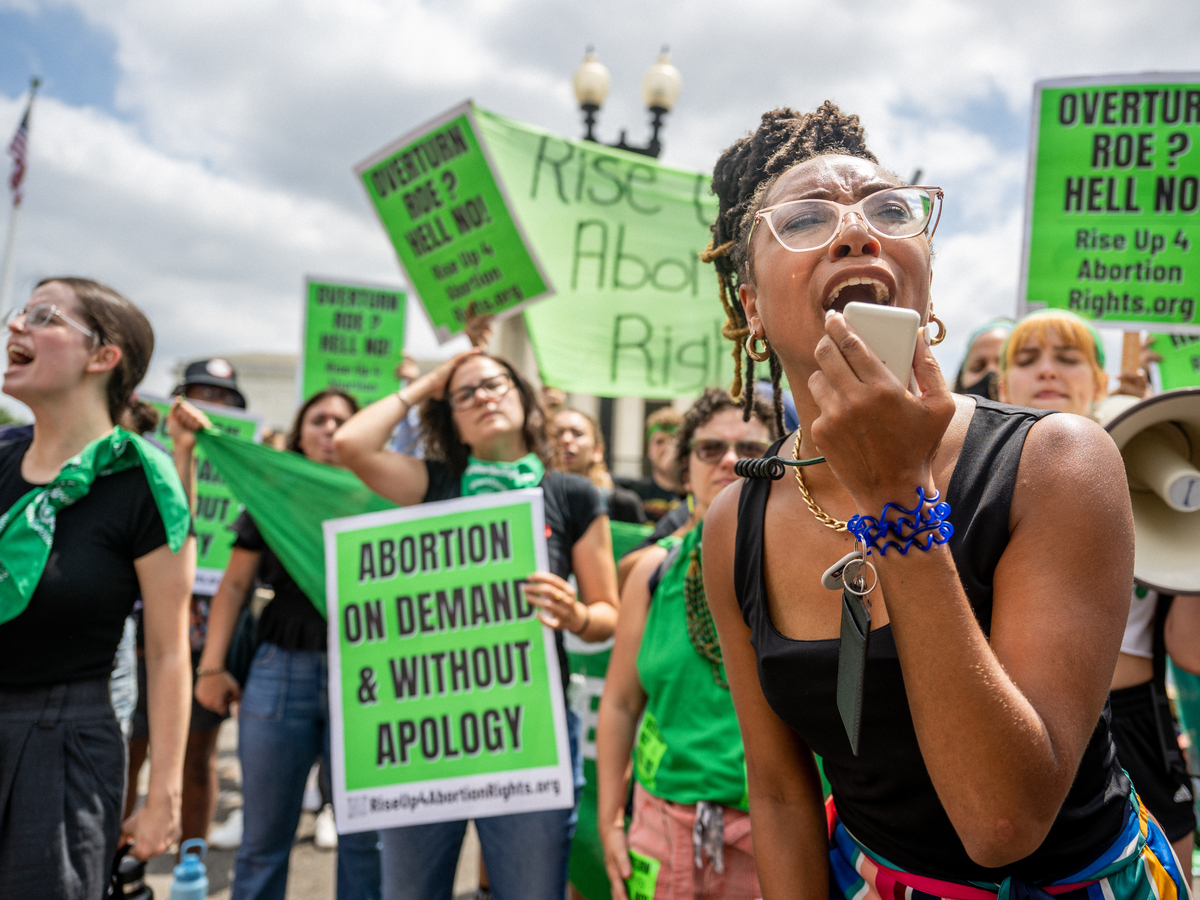
WASHINGTON, DC - JUNE 24: Abortion rights demonstrator Elizabeth White leads a protest. June 24, 2022 in Washington, DC. The Court's decision in Dobbs v Jackson Women's Health overturned the landmark 50-year-old Roe v Wade case and erased a federal right to an abortion. (Photo by Brandon Bell/Getty Images) Brandon Bell/Getty Images hide caption

WASHINGTON, DC - JUNE 24: Abortion rights demonstrator Elizabeth White leads a protest. June 24, 2022 in Washington, DC. The Court's decision in Dobbs v Jackson Women's Health overturned the landmark 50-year-old Roe v Wade case and erased a federal right to an abortion. (Photo by Brandon Bell/Getty Images)
Brandon Bell/Getty ImagesLast June, when the Supreme Court reversed the Roe v. Wade decision, which had stood for nearly 50 years, the constitutional right to abortion ceased to exist.
While reproductive health providers had been fearing, and preparing for the possible reversal for years, it still left millions of people seeking reproductive health care in flux.
A year on, state controlled access to abortion continues to shift in many locations across the country.
We hear from people who have been forced to make decisions that they never imagined. And, we learn how lawmakers plan to defend reproductive rights.
Email us at

 Live Radio
Live Radio